October 2021
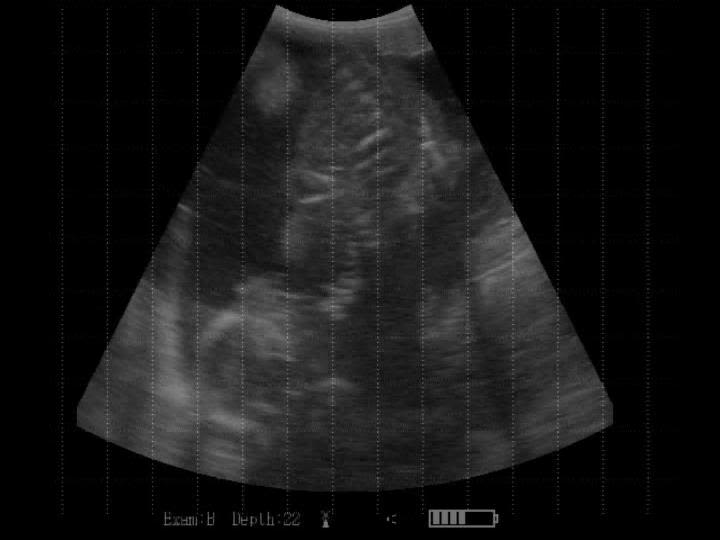
Fetal Aging – Words of caution when using placentomes
Fetal aging is a great service for clients. There are many uses for this information: calving groups, sale barn sorts, a measure of bull performance, etc. Fetal aging heifers in the 35 to 85 days post-breeding window can be very accurate. As pregnancy progresses and cow size increases, there are greater challenges that affect accuracy.
In mid-gestation, it is often difficult to visualize the fetus within the ultrasound image. Large frame and older cows add to this challenge. The fetus is deep in the abdomen and cannot be reached with the extension arm and 22cm depth setting. The only “information” available for fetal aging may be placentome size. Use this information with caution. Yes, placentomes get larger as the pregnancy advances but placentome size varies with position on the uterus and other factors. The closer the placentomes are to the fetus, the larger the placentomes. See the image below. This dissection of an 80-day pregnancy is from The Visual Guide to Bovine Reproduction (formerly called the Drost Project) on the University of Florida website. The placentomes are shown here range in size from less than 1 cm to over 2 cm. If one cannot reach the fetus with the extension arm and 22cm depth setting on the ultrasound unit, it would stand to reason that the placentomes being visualized are smaller than other placentomes that will be found near the uterus (if we could see them).
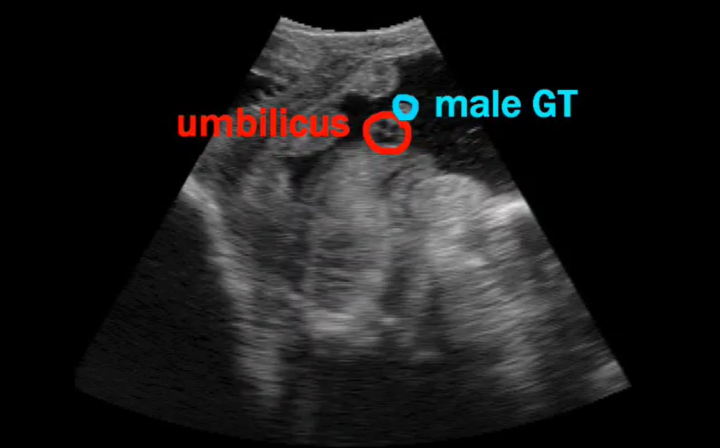
Determining Fetal Sex
Fetal gender determination is all about training your eye. This video will walk you through the basics of fetal sexing.
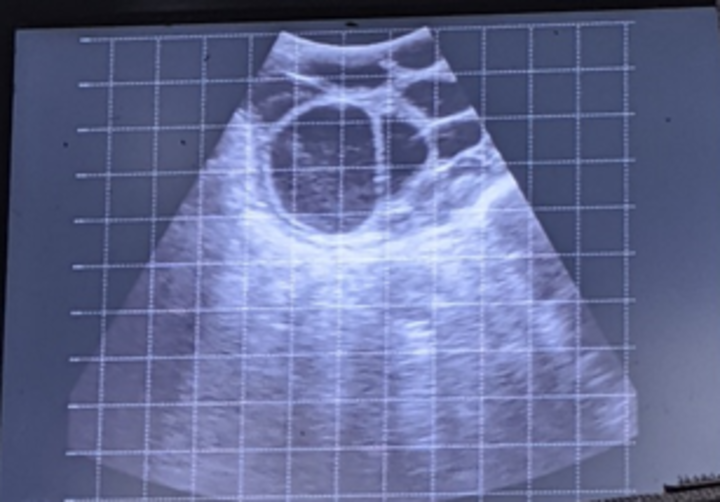
Interesting Ovaries
Curious about ovarian structures? Check out this video of some bovine ovaries!
September 2021

BECOMING A PROFICIENT ULTRASOUNDER--THE IMPORTANCE OF TRAINING YOUR EYE
Becoming a good ultrasounder is all about reading the details amidst the shades of grey. Training your eye to know what “normal” is, will be quite helpful. If you learn what a standard or normal image looks like, you will be able to determine a variation. Ultrasounding takes some effort to learn. The natural progression is pregnant/open determinationàfetal agingàfetal sexing and detailed ovarian exams. Confirming pregnancies is simple and can be learned quite quickly for most. Basic fetal aging is a natural progression shortly after pregnant/open status. Fetal sexing and advanced ovarian exams take a lot more time and number of cattle scanned to learn.
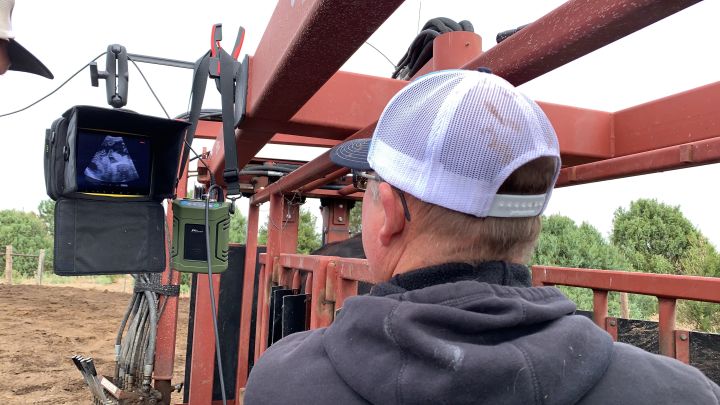
GETTING THE MOST OUT OF PREGCHECKING
Pregchecking is an important tool to manage your herd efficiently. There are multiple ways to determine the pregnancy status of an animal: wait and see, palpate, draw blood and ultrasound. As in many facets of the cattle industry, there is not a one size fits all solution. Most of us are addressing the questions, “Am I feeding open cattle?” and, “How do I determine which are my most productive animals?”. Ultrasound technology helps answer these questions.
August 2021
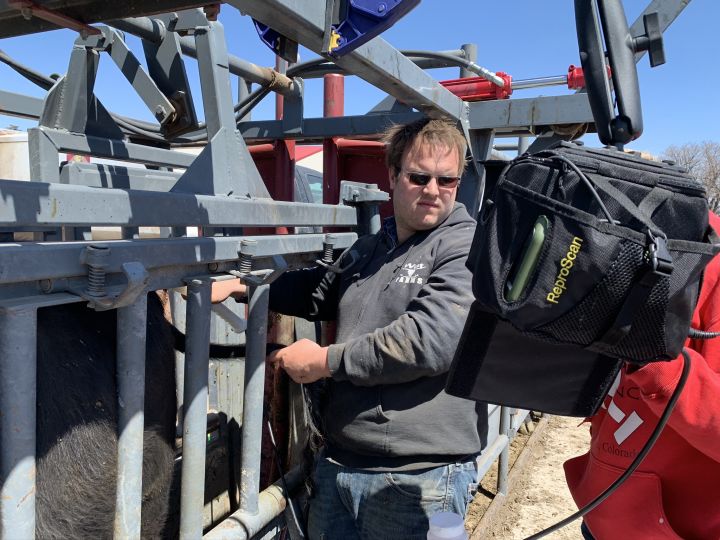
The Importance of Training Your Eye
Becoming a good ultrasounder is all about reading the details amidst the shades of grey. Training your eye to know what “normal” is, will be quite helpful. If you learn what a standard or normal image looks like, you will be able to quickly pick up anything that is outside of that.
A great illustration of this was in a group of heifers the other day: they were all between 60 and 120 days along. We came across a fetus that appeared to be about 70 days, but something was odd. Taking a couple extra seconds to be thorough in our ultrasounding helped determine that there was not enough fluid associated with the pregnancy and there no fetal heartbeat. This, in turn, helped us determine that she was in the process of reabsorbing the pregnancy and would not carry the calf to term.
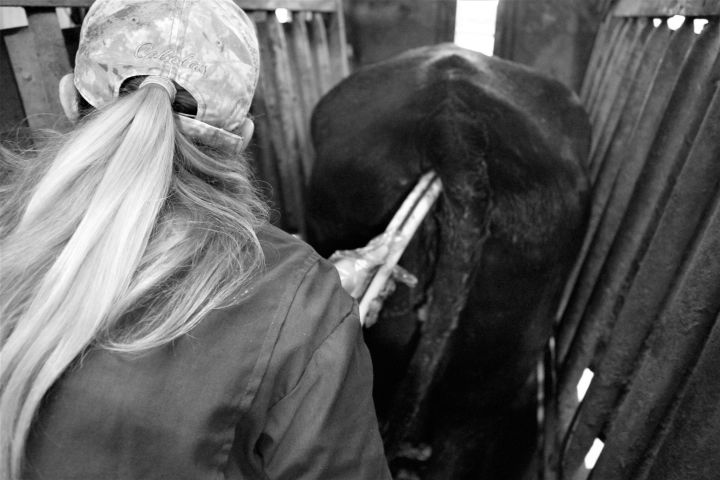
ReproScan Has Your Back -- Literally!
Safety at the Chute during Pregnancy Testing – This includes your personal safety!
Working cattle is always a challenge. This challenge should focus on quality of work rather than speed. Quality work includes accurate pregnancy testing, safe and efficient handling of the cattle and no injuries!
Sometimes the injuries are chronic in nature and only the person that wakes up the next day with a sore shoulder or back knows that the injury has occurred or that an old injury has flared up again. Let’s all be proactive and use the best communication skills, training and equipment to minimize these aches, pains and sometimes debilitating injuries.
July 2021
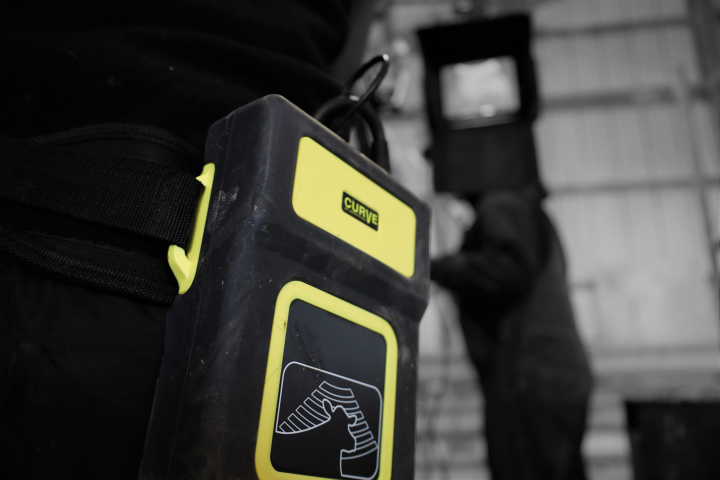
Understanding Your Exams and Settings
Your ReproScan XTC or BoviScan Curve has several preset exams. Each one of these exams are set a for a slightly different use, but you can also adjust them on your own if you want to change your image. Pressing the exam button on the top of your machine will scroll through each different exam (A through D, or A through H, depending how many exams your machine has). To adjust an individual setting, press the menu button, then use the exam button to scroll though the menu, and the “+” and “-“ button to increase or decrease the setting. Here is a brief overview of what each exam is set up for:
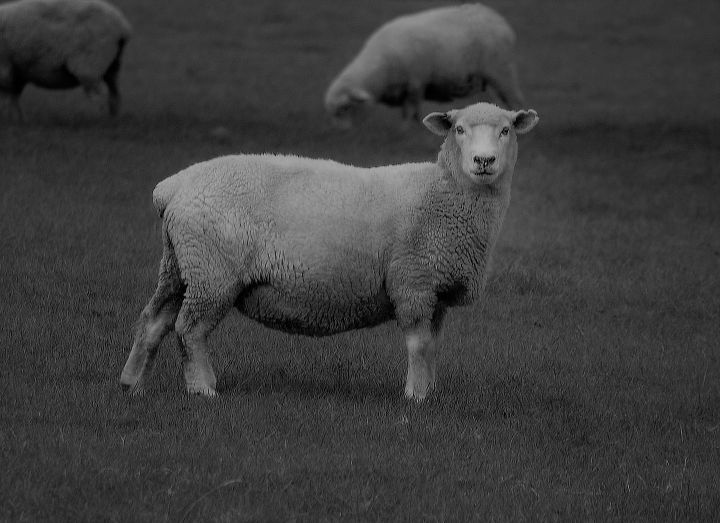
Using your XTC/Curve For Multiple Species
The ReproScan XTC and BoviScan Curve were designed for use on cattle, but they can be used for other applications. They can both be used for equine, small ruminants, and small animal work. Adjusting a few settings can make the image a lot better for these uses.
Using your XTC/Curve for Multiple Species
If you are doing any equine (early stages), you want to have a shallower exam with higher frequency to get the most detailing out of your probe. Therefore, increasing your frequency and decreasing your focus will offer a slightly improved ultrasound image. Changing your frame rate to 2 will also improve the image quality just a touch.
June 2021

Best Practices - Service Checks!
Have you sent your machine in for a service check lately? An important part of equipment care is making sure your machines are cared for and checked if they working properly. We recommend sending in your equipment for a service check every two years; before your busiest time of year. Sending in your machines frequently will save you money, time, and productivity in the long run. To send your equipment in for a service check, give us a call at 877-890-2411!